How to increase the educational value of a surgical videos?
A surgical video is a short, educational format designed to convey a technical message simply. This content is aimed at a wide audience: surgeons in initial training (residents or students) as well as experts during their professional curriculum. Several studies have shown the importance of enhancing the educational aspect of the video to increase its effectiveness.

Getting the message across
Making a surgical video educational is an essential step in enabling the audience to understand the content.
In the context of surgical training, it is a real learning tool, complementary to theoretical courses and companionship in the operating theatre… provided that it is produced and thought through carefully. Indeed, without any educational editing, a surgical video could be a promotional tool or simply too complex to be understood.
Some consensus studies have identified key elements of educational surgical videos, such as the LAP-VEGaS recommendations in laparoscopic surgery or IVORY in ENT – head and neck surgery.
This article summarizes the key educational features to include in a surgical video to make it as effective as possible.
Choose your words carefully
The textual elements that accompany the content must be explicit and informative : they are the first to be read, and are responsible for informing a person about the content of the video.
This includes the title, description and thumbnail of the video when uploaded, whether on a Youtube channel or a website. Precise and carefully chosen vocabulary will make it easier for Google to reference the video and surgeons to search online.
Depending on the audience’s knowledge (based on the residents who are more or less advanced in their training), it is possible to use a more or less technical and surgical vocabulary.
The texts act as a first filter: the web user must immediately understand that this is an educational surgical video, and not created for marketing or entertainment purposes.
Specify the framework of the procedure
At the same time, it is advisable to include text in the video: it is a very effective way of clarifying certain aspects of the procedure’s framework or specifying the procedure’s protocol before incision for example.
All relevant information concerning the disease, the context of the operation and the medical history, which could be useful to understand the video, should be explained at the beginning of the video.
In order to be sure to be exhaustive in the explanations, it is best to anticipate any questions the audience might have, always respecting the anonymity of the patient throughout. If shown at a conference on the topic, what questions would be asked?
It is also customary to specify the name of the surgeon, and to add the name and logo of the institution where the surgery was performed. These elements make it possible to compare surgical techniques and also increases credibility to the procedure shown in the video.

Working on the video to make it educational
The more didactic and structured the presentation, the better the surgical video will be.
Avoid long formats
One of the challenges of an educational surgical video is to keep the patient’s attention right to the end. So although adding educational features to the video is a key element, the format also plays its part.
The ideal video length is between three and five minutes, enough time to provide contextual elements, but short enough to retain attention.
Find out more: The technical specifications of the‘a surgical video
Structure the video
To take this a step further, a surgical video will be more effective if it is structured around the key moments of the operation.
These chapters should be identified at the start of the video (some platforms even allow you to indicate the chaptering on the viewing progress bar) and named precisely so that they can be identified very quickly.
In addition, screens are often inserted to mark the transition, remind you of the name of the new chapter and specify certain technical information (points of attention, pitfalls to watch out for, anatomical elements) if necessary.
Find out more: Four tips for editing a surgical video more quickly
Annotate, illustrate and draw
Within the video, graphic elements serve as visual support, to explain, schematise or clarify certain points simply and effectively. As the saying goes, ” A picture is worth a thousand words “.
These may be arrows indicating an anomaly, an anatomical landmark, or circles showing an area of work or something important to bear in mind… Also, the use of a few key words can support these drawings by highlighting the relevant points of the surgery, tips or names.
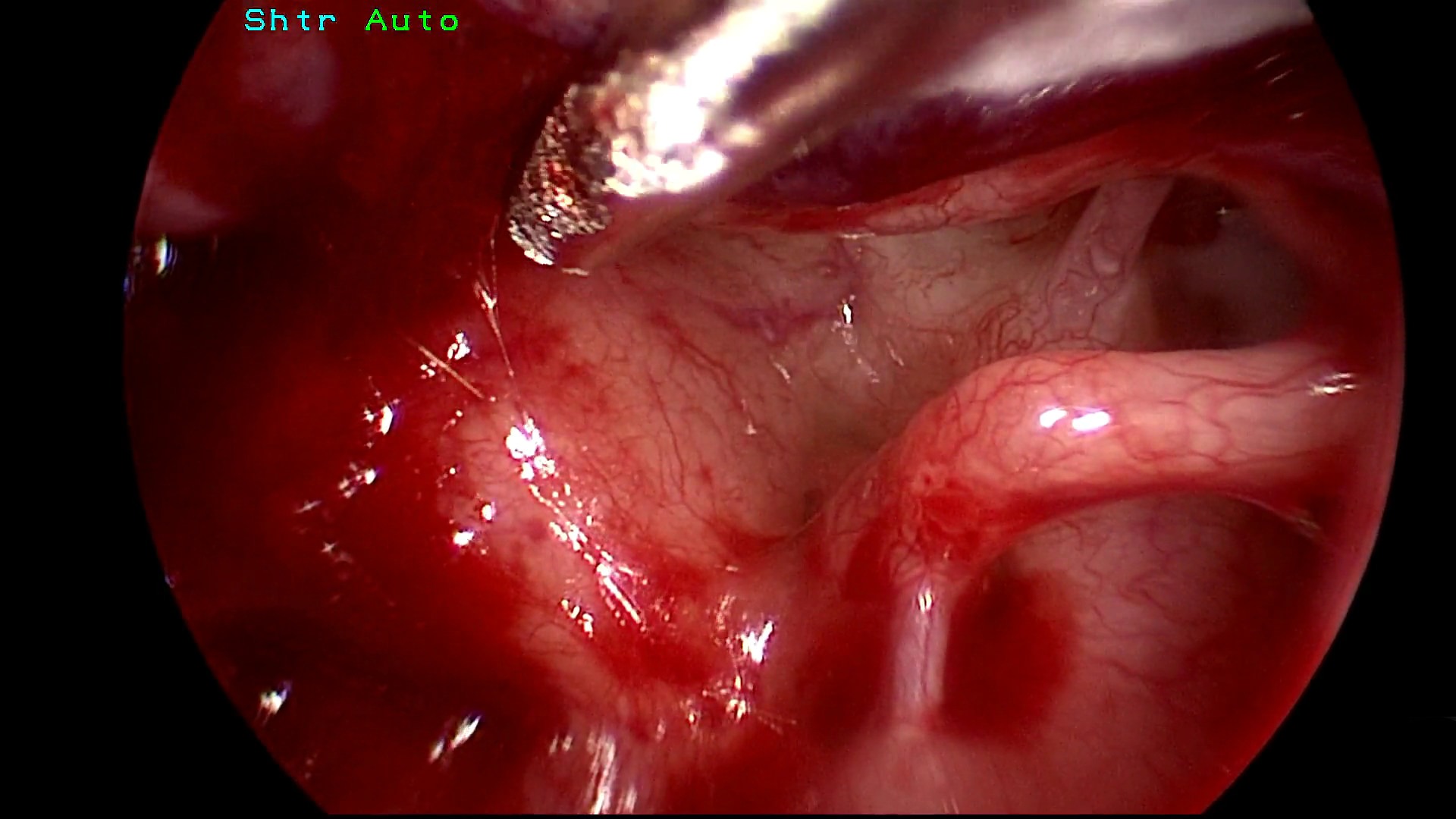
Without any annotations, this image is only explicit for subspecialty surgeons …
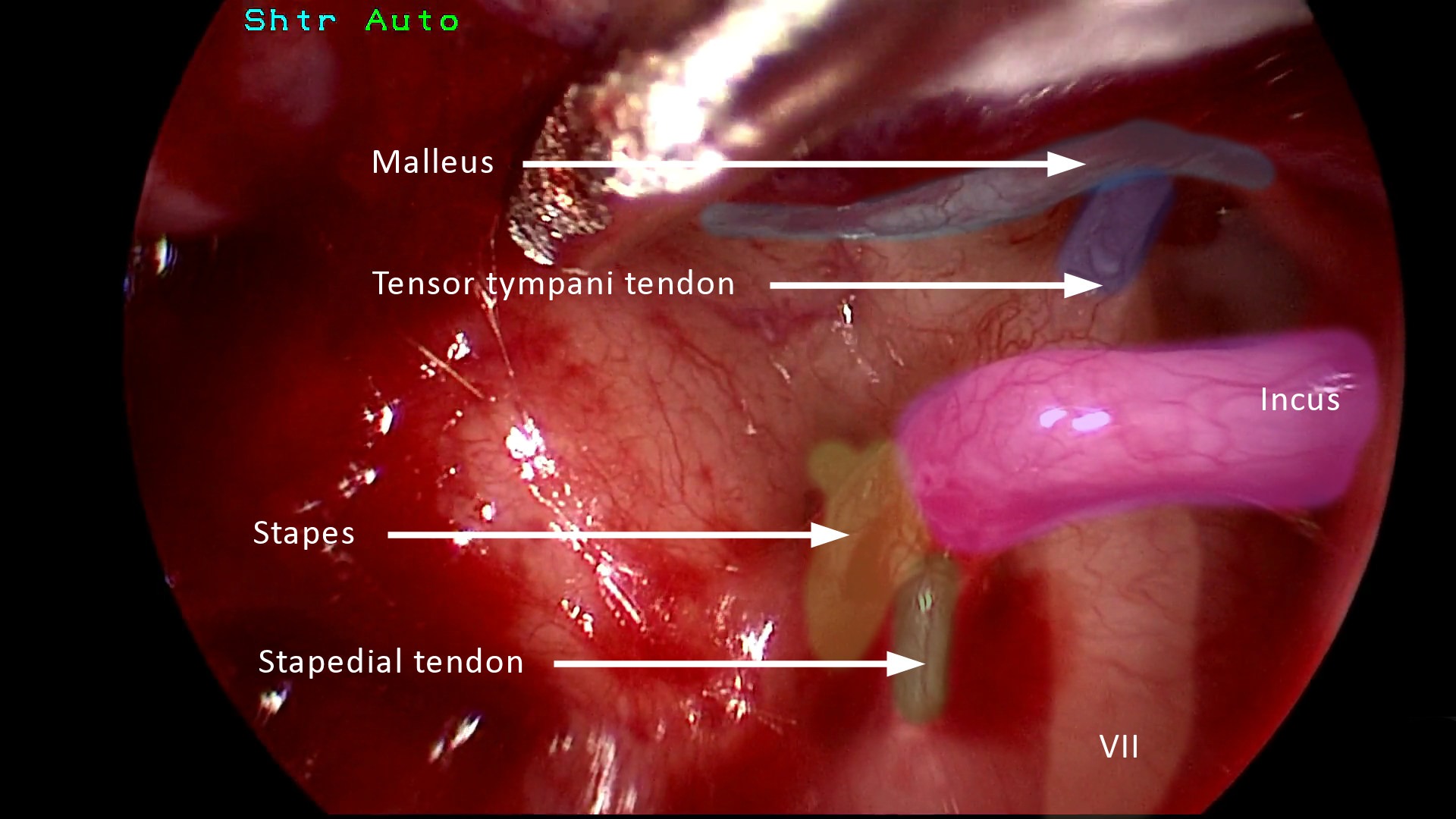
… the annotations, highlights and arrows clarify this image and help to make the surgical video more educational for the beginner.
Storytelling to help the audience
Alongside the drawings and diagrams, a narration is important to help the audience proply understand the subject. It can be oral or written, ideally both.
Several publications have shown that narration is associated with better understanding and appreciation of an educational surgical video. The idea is to take the listener by the hand and guide him or her through.
- Some of the images are not explicit and deserve to be told;
- It gives precise terms on which to build, making it easier to understand and learn;
- It helps to maintain interest throughout the video. It’s all about telling a story.
Recording a voiceover is very effective to engage with the audience in a video, but must be recorded carefully to be as clear as possible.
The addition, subtitles are recommended to make the video more accessible in situations where it is not possible to add sound, and for people who are hard of hearing or whose mother tongue is a foreign language. It is also possible to create multilingual subtitles, giving Internet users the choice of their preferred language.
Read more
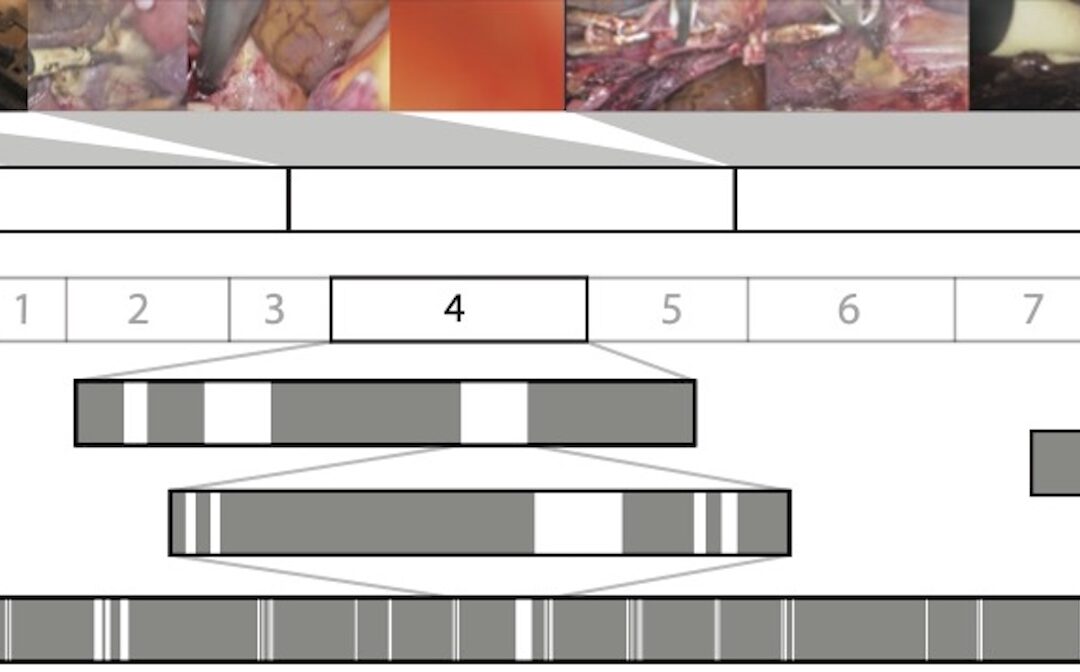
Surgical Video Summarization: Multifarious Uses, Summarization Process and Ad-Hoc Coordination
While surgical videos are valuable support material for activities around surgery, their summarization demands great amounts of time from surgeons, limiting the production of videos. Through fieldwork, we show current practices around surgical videos. First, we...
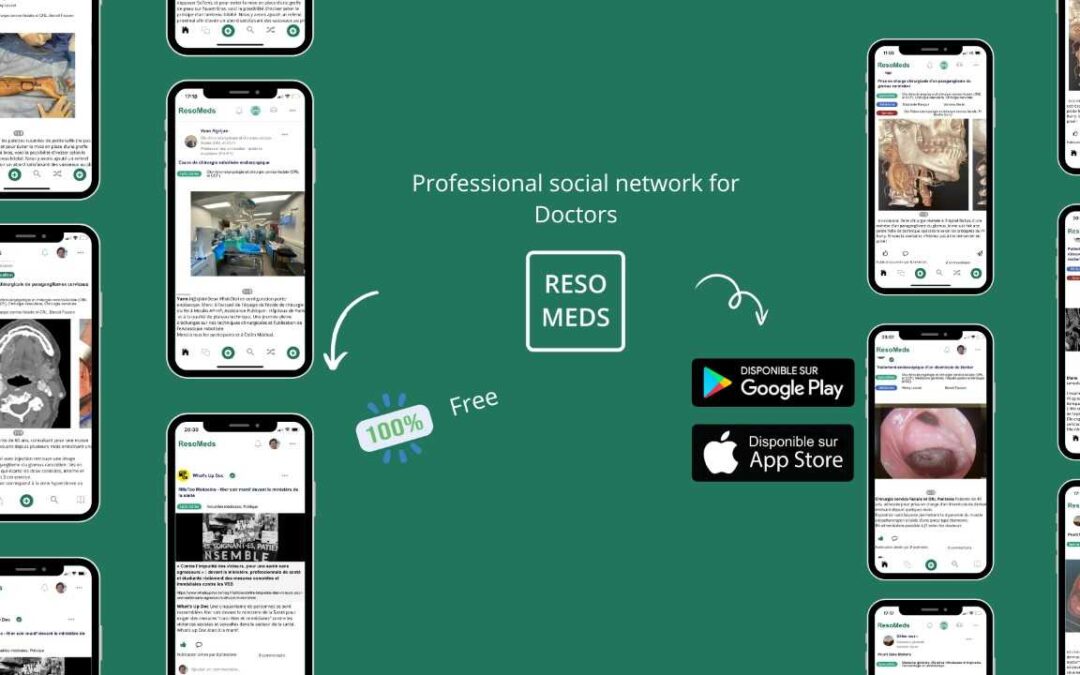
ResoMeds: a social network sharing videos
Case reports enrich medical knowledge and training, and improve practice [1-4]. However, their publication is often limited in existing journals [5]. We aim to highlight the importance of creating a platform for physician exchange to promote peer learning, case...
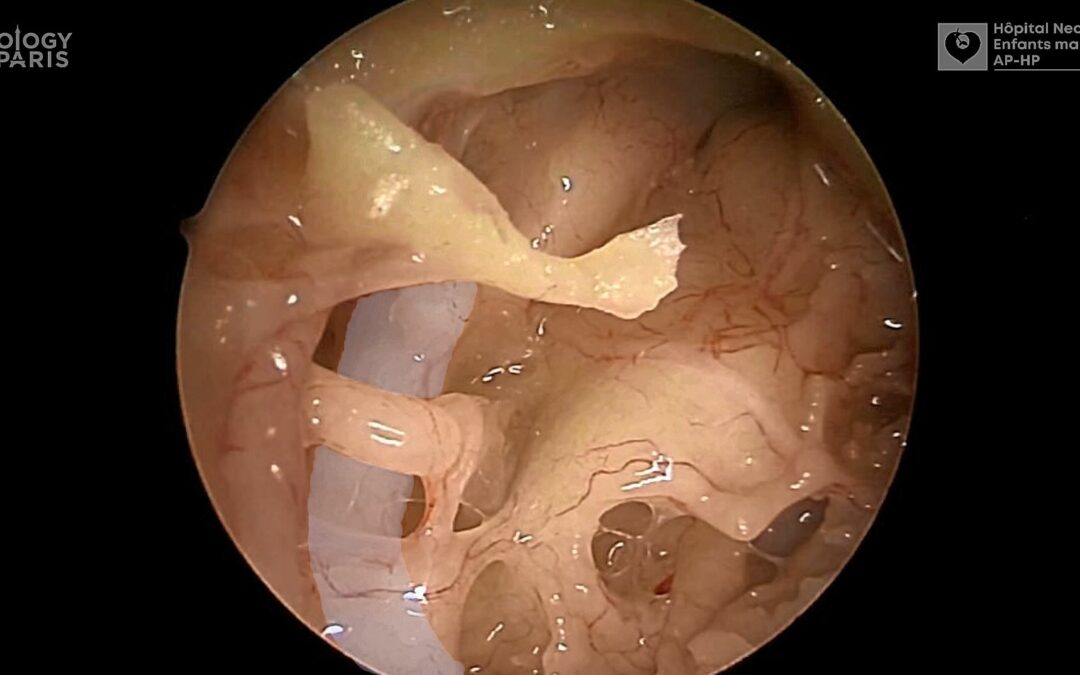
Videos improve knowledge retention of surgical anatomy
In otolaryngology, a new publication shows that an educational video improves anatomy learning and knowledge retention in the long term. This study conducted by the ENT team at Necker-Enfants Malades, APHP (Université Paris Cité) and led by Pr François Simon shows the...
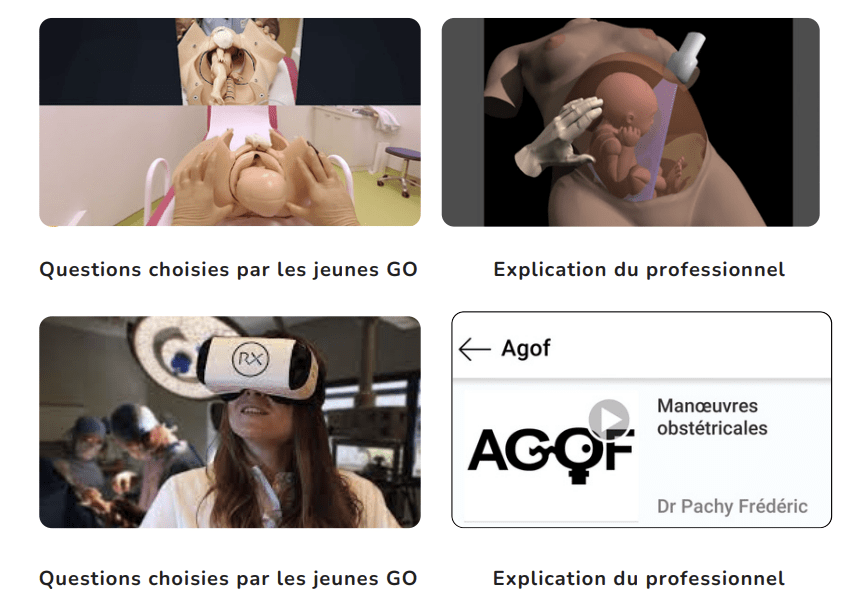
Surgical videos: using the most efficient medium. AGOF’s associative experience
In 2010, the French National Authority for Health (HAS) issued the famous slogan for apprentice surgeons: "Never perform surgery on a patient for the first time" (1). It is sometimes difficult for a young surgeon to accept that he or she has not received sufficient...
